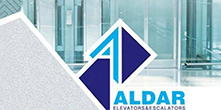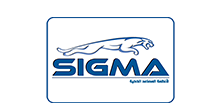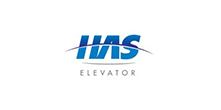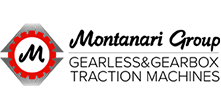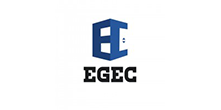
Login or create an account
CloseReturning Customer
I am a returning customer
Login or create an account
CloseRegister Account
If you already have an account with us, please login at the login form.
Your Account Has Been Created!
Thank you for registering with Egyptlifts!
You will be notified by e-mail once your account has been activated by the store owner.
If you have ANY questions about the operation of this online shop, please contact the store owner.
Account Logout
You have been logged off your account. It is now safe to leave the computer.
Your shopping cart has been saved, the items inside it will be restored whenever you log back into your account.
Elevator - Elevator - Heliopolis - Sensor - Elevator - Elevator - Elevator - Secur Lift - Elevator - Elevator - Elevators - Elevator - Elevators - For Elevators - Elevators
In a world where time is racing upward, stairs are no longer enough. The elevator is not just a metal box moving up and down; it is the epitome of a long story between humanity and architecture, between comfort and progress, between earth and sky. It is the silent device that carries our daily burdens, transporting us from the hustle and bustle of one floor to the quiet of the next, without us noticing that it is one of the pillars of modern cities. How the elevator reached this importance and why it has become an indispensable part of every building looking toward the future will be discussed in our article.
The Elevator: The Backbone of Modern Buildings
Skyscrapers and tall towers would no longer be possible without elevators. Just as the spine forms the foundation of the body's alignment, the elevator represents the vital element that connects the floors of a building and ensures smooth movement between vertical spaces. It is not merely a means of vertical transportation; it is an essential infrastructure without which no residential, commercial, or medical building can operate efficiently. 1. A fundamental pillar of vertical urban expansion
In the past, buildings were limited to 3 to 5 floors due to the difficulty of vertical movement.
With the advent of elevators, it became possible to build towers with dozens or even hundreds of floors.
Elevators thus became the kinetic structure that connects floors, just as the spine connects parts of the body.
2. Ensuring fluidity between floors
Just as the spinal cord passes through the spine, connecting signals between the brain and the body, the cabin passes through the elevator shaft to transport people quickly and efficiently between different levels.
This fluid movement is essential in high-traffic areas: hospitals, hotels, commercial towers, and malls.
3. The elevator and the organization of functions within the building
Certain floors are associated with specific functions (housing, services, administrations, parking), and the elevator provides quick access to them. It can also be programmed to connect only certain categories (for example, elevators for employees and others for visitors).
Thus, it becomes an internal organizer of daily functions within the architectural structure, a regulatory role similar to that of the spine in supporting and distributing movement.
4. Center for Intelligent Systems and Programming
Modern elevators are equipped with intelligent systems:
Face or card recognition.
Overweight detection.
Stops at pre-programmed floors.
These functions make them a sensitive technical element in a building, similar to the spine, a center for transmitting signals between the brain and the body's organs.
5. Safety and Reliability
Any malfunction in an elevator could paralyze the building's use, especially in high-rise buildings.
Therefore, regular maintenance and quality control are no less important than inspecting the foundations or structural columns.
6. Elevators and Their Relationship to Social Aspects
The elevator is no longer just a means of transportation; it has become an element of social justice within buildings. Elevators enable the elderly, people with disabilities, and the sick to move freely without difficulty. In multi-story buildings, the presence of an elevator has become a standard for decent living and even a right for users in many modern urban legislations.
7. Elevator as an Economic Factor in Property Value
The presence of an elevator in a building significantly increases property value.
High-rise apartments are no longer the cheapest they once were; they have become more desirable due to the ease of access via elevator.
Types of Elevators
Traditional (Traction) Elevators
Description:
Rely on steel cables (wires) wrapped around a pulley, connected to an electric motor in a dedicated room.
Advantages:
Fast and efficient for medium- and high-rise buildings.
Suitable for towers, hotels, and office buildings.
Disadvantages:
Requires a machine room.
Relatively complex installation.
2. Machine Room-Less (MRL) Elevators
Description:
Similar to traction elevators, but the motor is installed within the elevator shaft itself, eliminating the need for a separate room.
Advantages:
Saves space within the building.
Lower energy consumption.
Ideal for buildings with limited space.
Disadvantages:
Maintenance costs may be higher.
Not suitable for very tall buildings.
3. Hydraulic Elevators
Description:
They rely on a hydraulic pressure system (oil and fluids) to propel the elevator upward, and gravity to move it downward.
Advantages:
Suitable for low-rise buildings (up to 6 floors).
Simpler installation and no counterweight required.
Low cost to install.
Disadvantages:
Relatively slow.
More energy-intensive.
Requires a deep pit under the elevator.
4. Panoramic (Glass) Elevators
Description:
Elevators with an aesthetically pleasing design, with cabin walls made entirely or partially of glass.
Use:
In shopping malls, luxury hotels, and exhibition halls.
Adds a high aesthetic value.
Disadvantages:
Higher cost.
Requires careful maintenance.
5. Dumbwaiter Elevators
Description:
Small elevators designed to transport food or documents between floors.
Use:
In restaurants, libraries, hotels, and hospitals.
6. Home Elevators
Description:
Small elevators designed for private homes.
Advantages:
Suitable for people with special needs or the elderly.
Multiple systems (hydraulic, pneumatic, roomless).
7. Pneumatic Elevators
Description:
Operated by air pressure inside a transparent tube, without the need for cables or fluids.
Advantages:
Modern and lightweight design.
Does not require a pit or machine room.
Disadvantages:
Does not support heavy loads.
Relatively expensive.
Is the elevator a convenience tool or a cultural necessity?
In its early days, the elevator played a convenient role in people's daily lives. However, it has evolved to become a pillar of contemporary urban planning. It is both a personal convenience tool and a collective cultural necessity, combining well-being and justice, function and structure, and people and space.
First: The Elevator as a Convenience Tool
Since its invention, the elevator has represented a turning point in daily life within buildings. Its basic idea was based on reducing physical effort, but it has evolved to become a symbol of comfort, especially in the lives of individuals within urban communities.
1. Reducing Physical Burdens
Using an elevator relieves people of the need to climb stairs, especially in multi-story buildings.
It contributes to the comfort of the elderly, pregnant women, the sick, and people with mobility disabilities.
2. Convenience in Time Management
Elevators reduce the time that would otherwise be wasted moving between floors.
They have become a necessity for productivity in business and commercial environments, playing an important role in ensuring the smooth running of daily work.
3. Comfort for Family and Daily Use
Moving heavy items such as baby strollers, household appliances, furniture, and daily necessities has become much easier thanks to the elevator.
Second: The Elevator as a Civilizational Necessity
With vertical urban expansion and population growth, the elevator is no longer just a convenience; it has become an essential element of modern urban planning, representing an advanced urban and social dimension.
1. The Elevator as an Enabler of Vertical Urbanization
Modern cities are moving toward vertical construction due to the limited horizontal spaces.
Elevators are the essential solution for vertical mobility; without them, the idea of skyscrapers or residential towers collapses.
2. Legislative and Regulatory Requirement
Many urban laws now require elevators in residential and commercial buildings that exceed a certain number of floors.
Even in schools, hospitals, and public facilities, the presence of an elevator is a condition for licensing to ensure inclusiveness and accessibility.
3. A Symbol of Equality and Social Justice
Elevators ensure that all users, regardless of their physical abilities, have access to all parts of the building.
Thus, the elevator has become a tool for social justice in urban use, not just a mechanical device.
4. The Elevator as Smart Infrastructure
In smart buildings, the elevator is connected to energy management and control systems and can be programmed according to peak times and specific needs.
It is an element of an integrated infrastructure network that interacts with data to provide a more efficient user experience.
How does an elevator define the quality of buildings?
The elevator is an integral part of assessing the quality of buildings, as it is not only a means of transportation between floors but also an element that contributes to comfort, safety, and efficiency within the building. It reflects the degree of urban development and attention to detail and quality of construction. Here is how an elevator can define the quality of buildings:
1. Infrastructure and Engineering Design
A good elevator design reflects the professionalism and sophistication of the building's infrastructure.
Buildings that contain modern types of elevators, such as machine room-less (MRL) elevators or smart elevators, indicate that the building was planned and implemented using the best architectural technologies and practices.
2. Reliability and Comfort
The speed and efficiency of an elevator directly impacts the comfort of its users. Fast elevators that move smoothly and without vibration indicate that the building has been constructed using high-quality materials.
Elevators that stop at floors regularly and without delay are a sign that a building prioritizes quality in every detail.
3. Safety Systems
The presence of advanced safety systems such as emergency brakes, overload sensors, and automatic alarms in the event of a malfunction are clear indicators of a building's commitment to safety and quality standards.
Elevators equipped with intelligent monitoring and control demonstrate that the building adheres to the latest specifications and is committed to the safety of its users.
4. Integration with Smart Systems
Buildings that include smart building management systems (BMS) include elevators integrated with these systems to monitor performance and energy consumption. This reflects that a building is not just a structure, but an advanced environment that emphasizes energy efficiency and sustainability.
5. Ability to Withstand Heavy Use
Elevators that can withstand heavy and frequent use, such as those found in commercial buildings or hospitals, indicate that the building was designed to sustainably meet people's needs.
6. Aesthetic Design and Meticulous Detailing
Elevators with a sophisticated, contemporary aesthetic design are part of the building's visual identity. The use of high-end materials such as glass, stainless steel, and modern lighting adds an aesthetic touch and demonstrates the building's commitment to quality, both inside and out.
7. Availability of Periodic Maintenance and After-Sales Service
The presence of a professional maintenance company and a technical support team handling the elevator reflects the quality of the building. Well-serviced buildings provide regular maintenance for elevators to ensure high performance, which contributes to maintaining their quality for a longer period.
When an elevator door is delayed in opening, is this considered a technical alarm?
A delayed elevator door opening may be considered a technical alarm, indicating a malfunction in the elevator system or its components. There are several reasons why a door may be delayed, some of which could be indicative of a problem that requires inspection and maintenance. Here are some common causes:
1. Problems with the door motor or opening mechanism
The motor that controls the door's opening and closing may malfunction, resulting in a delayed door opening. The problem may be with the gear system or the motor itself.
2. Obstructions or blockages in the door
If something is stuck between the door or in the opening mechanism (such as dirt or debris), this may prevent the door from opening properly at the specified time.
3. Problems with the safety sensors
Elevators are equipped with sensors that detect whether the door is fully open or if a person or object is obstructing the opening. If these sensors are faulty or dirty, it may cause the door to open late or not at all. 4. Elevator Power Drop or Electrical Problems
Sometimes, a power drop or electrical problems in the system can cause a delay in door opening. The electrical systems or control unit may need to be inspected and serviced.
5. Electronic Control System Problems
The software or control hardware (such as the elevator's microcontroller) may have malfunctioned, resulting in a delay or failure in the opening process.
6. System Balance Problems
The balance of doors is very important for the proper operation of an elevator. If the doors are unbalanced due to a malfunction in the motors or mechanical surfaces that guide the door, the doors may open delayed or even fail to open at all. This may require checking and adjusting the elevator's mechanical components.
7. Automatic Door Closing System Malfunction
Some elevators have an automatic door closing system that automatically closes the doors after a short period of time. If this system is malfunctioning or not working properly, it can cause a delay in door opening because the system is slow to recognize the correct opening time.
8. Environmental Effects
Sometimes, humidity or temperature changes can affect the operation of the elevator's mechanical or electrical mechanism. Changes in weather (such as high humidity in the summer or low temperatures in the winter) can reduce the system's efficiency, affecting the speed at which doors open.
9. Faulty Cables and Connections
An elevator operates using a system of cables that control mechanical movements. If the cables or electrical wires that control door opening are faulty or improperly tightened, this can cause delays in door opening and improper door opening.
10. Central Control Unit Problems
Modern elevators rely on a central control unit that controls all elevator operations, including the doors. A faulty central control unit or damage to an electronic component such as circuits or motherboards can result in delays in door operation or improper door opening.
11. Poor Maintenance or Neglected Elevator Cleaning
Dust and dirt can accumulate in the door mechanism and lead to poor system performance. Failure to clean the elevator regularly or neglecting its maintenance can lead to problems with door opening or other systems such as motors or sensors.
Are elevators a source of safety?
First: Mechanical and technical safety
Fall protection systems
Elevators rely on a dual braking system that can stop the cabin even if the cables break, thanks to safety gears that automatically operate when speed is exceeded or balance is lost.
Overload protection handles
Elevators are equipped with precise sensors that measure the weight inside the cabin. When the permissible load is exceeded, the elevator is prevented from moving to protect users from any danger.
Protection from electrical currents
Elevator control units are equipped with a system that protects electrical circuits from high voltages or overcurrents, reducing the possibility of electrical short circuits or sudden malfunctions.
Second: Psychological and functional safety for users
Surveillance cameras and voice communication
Many elevators feature surveillance cameras or intercom systems, giving users a greater sense of security and enabling them to call for help in the event of an emergency.
Backup lighting
In the event of a power outage, the cabin lighting automatically turns on to ensure clear vision, preventing panic or fear.
Continuous Internal Ventilation
The cabin is equipped with fans or vents to help renew the air inside the elevator, which is essential, especially in cases of sudden stops or breakdowns.
Third: Safety in Sensitive Environments (Hospitals, Residential Towers, Government Institutions)
Emergency Elevators
Some elevators are designated for emergencies only and are equipped to remain operational during fires or earthquakes thanks to insulation and thermal protection systems.
Medical Elevators
Specially designed for transporting patients in beds or wheelchairs, they feature larger sizes and wider door openings for ease of movement and rapid rescue.
Fourth: The Role of Maintenance in Enhancing Safety
An elevator, no matter how modern, is not safe without proactive maintenance programs that include:
Testing brakes and balancing devices.
Calibrating sensors and buttons.
Updating control unit software.
Elevators that are neglected in maintenance become a source of danger, while well-maintained elevators remain among the safest means of vertical transportation.
Fifth: How do elevators enhance the safety of a building's infrastructure?
The presence of an elevator in a building contributes to:
Facilitating the rapid evacuation of emergency cases.
Supporting people with disabilities to move safely.
Reducing congestion and pressure on emergency stairs.
Can Neglecting Elevator Maintenance Cause a Disaster?
Neglecting elevator maintenance can lead to a real disaster that threatens lives and property. An elevator is a complex device that relies on delicate mechanical and electrical components, and any undetected or unaddressed defect could lead to serious or fatal accidents, especially in multi-story or densely populated buildings.
Here are the most common disasters that can result from neglecting maintenance:
1. Cabin Fall
If cables are corroded or safety systems are damaged and not detected early, the cabin may lose its balance and fall, especially if the safety brakes or catch device malfunction.
2. People Trapped in the Elevator
A faulty control panel or a power outage without an emergency battery or automatic rescue system can lead to passengers being trapped for extended periods, causing panic or critical health conditions (especially for children or the sick).
3. Fire
Faulty electrical connections or poor ventilation can cause an electrical short circuit that can start a fire inside the elevator shaft, making evacuation difficult and increasing the risk of fire spreading throughout the building.
4. Mechanical Injury
Damaged doors or faulty sensors can cause sudden closures on passengers or prevent a sensor from stopping accurately on the floor, potentially causing a person to fall while entering or exiting.
5. Brake System Malfunction
If the brakes fail and are not detected during routine maintenance, the elevator can lose control when descending or ascending rapidly, resulting in a severe impact on the bottom of the shaft or the ceiling.
Frequently Asked Questions
How do elevators help people with disabilities?
Elevators for people with disabilities are equipped with special features, such as:
A spacious cabin that facilitates wheelchair access.
Low-height buttons that are easy to reach from a seated position.
Braille buttons for the blind.
Audible and visual alerts inform passengers of the current floor or elevator destination.
Automatic doors with extended opening times allow sufficient time for safe entry and exit.
Conclusion
In conclusion, the elevator is more than just a means of transportation within buildings; it is an essential element in building an integrated society that takes into account the needs of all its members, especially people of determination. Thanks to its advanced design and ability to remove spatial barriers, it has become a symbol of empowerment and true integration. Therefore, providing suitable and safe elevators is not a luxury, but rather a human and legislative responsibility that reflects the extent of societal development and awareness of the rights of all its citizens.
There are no products to list in this category.

